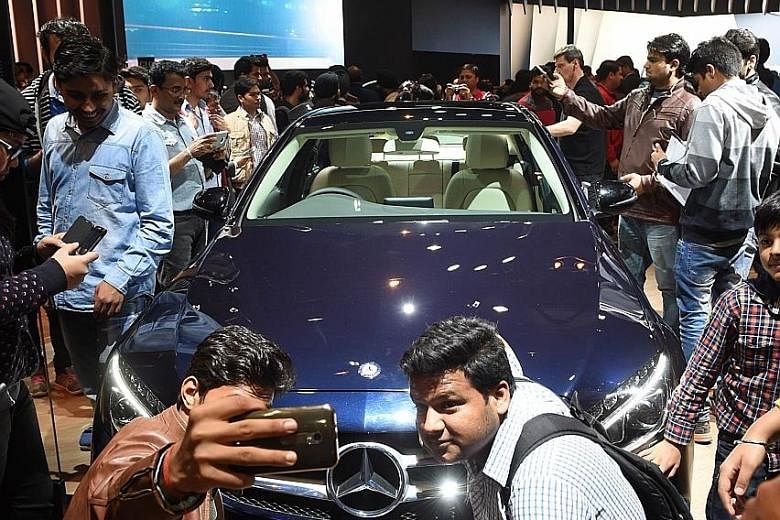NEW DELHI • India sees its growth exceeding economists' estimates to overtake a slowing China, a pace Prime Minister Narendra Modi's government will be under pressure to sustain when it presents its Budget on Feb 29.
Gross domestic product (GDP) will expand 7.6 per cent in the year through March, compared with 7.2 per cent a year earlier, the Statistics Ministry said in a statement on Monday.
India's economy expanded 7.3 per cent in the third quarter of the financial year ending in December last year. China grew 6.9 per cent last year, while Russia contracted 3.7 per cent and Brazil is forecast to shrink 3.7 per cent. India's expansion slowed to 7.3 per cent from October to December from 7.4 per cent the previous quarter.
Mr Modi is caught between the urge to boost spending in an economy that is showing mixed signs of strength, and the need to curb expenditure to meet Budget deficit targets and win more rate cuts from the central bank.
Indian stocks, bonds and currency saw their worst January since 2011, partly weighed down by concerns about fiscal slippage.
"The onus is on the government to sustain this pace," said chief economist Prasanna Ananthasubramanian at ICICI Securities Primary Dealership in Mumbai. "The drivers of growth from the data suggests that government spending and consumption spending are really strong."
But history shows that higher fiscal spending in India is accompanied not only by stronger growth but also higher inflation. That would jeopardise central bank governor Raghuram Rajan's 5 per cent target for March next year, probably compelling him to keep rates unchanged this year after four cuts last year.
Meanwhile a deadlock in Parliament has kept Mr Modi's administration from pushing through key economic Bills including a goods and services tax (GST). The levy will replace more than a dozen taxes, and boost revenue and growth through compliance.
Gross value added, a measure of economic strength closely watched by the central bank, rose 7.1 per cent from October to December last year.
The farm sector contracted 1 per cent, while mining rose 6.5 per cent, manufacturing 12.6 per cent, and electricity and gas output increased 6 per cent.
"GST will be a sentiment-turner and crucial for growth in the medium term," said economist Shubhada Rao with Yes Bank in Mumbai.
BLOOMBERG

